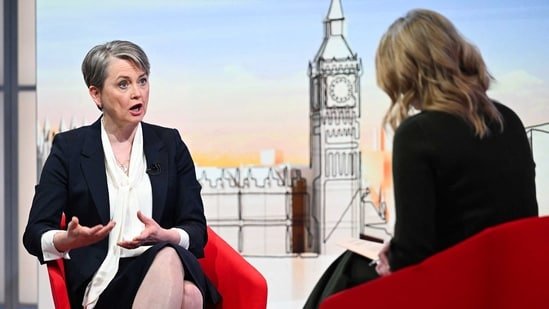Gov. Wes Moore’s proposal to slash $200 million in funding for a state administration that supports residents with developmental development sent shockwaves into the community that rely on those supports.
It’s one of the largest cuts in the governor’s attempt to fill a $3 billion budget deficit this year — particularly notable given that the agency only serves about 20,500 Marylanders.
While Moore’s proposed budget funds the Developmental Disabilities Administration (DDA) at $1.3 billion in fiscal 2026, officials say cuts are necessary to contain growing costs for the DDA, which has seen unsustainable increased expenses and enrollment in recent years.
But how did Maryland get to a point where the agency is over $200 million in the hole? Analysts and legislators are still trying to piece together details.
“I don’t think any of us want to cut DDA – we certainly don’t want to cut DDA more than we need to,” Sen. Clarence Lam (D-Anne Arundel and Howard) said in a recent interview.
“I am curious as to how our forecasting hasn’t predicted the need would increase this significantly,” he said. “Any cuts, particularly in services for those in need, are difficult. We are obviously facing a very difficult budget situation currently, so fiscal decisions need to be made.”
State analysts are combing through details for future budget discussions but have found some factors that contributed to the unanticipated shortfall.
DDA’s ‘black box’ budget
In a recent hearing in the Senate Budget and Taxation committee, David Romans, a budget analyst for Department of Legislative Services, said that the General Assembly budgeted just over $1 billion in general funds for the current fiscal year for DDA’s community services, which is 97% of the agency’s expenses.
But actual spending has overshot by some $450 million, “about 42% higher than what was originally appropriated and thought to be the correct amount for the fiscal 2025,” according to Romans.
It’s not the first time the DDA overspent its budget.
The DDA began overspending its annual budget in 2021, with significant spending increases in 2023 and 2024. But state analysts are not entirely clear why costs are rising for the agency.

Romans said that part of the challenge has been an ongoing lack of transparency from the DDA — along with inadequate probing from state oversight agencies.
“The DDA budget has always been a little bit of a black box … It’s never been easy to tease out what is driving changes in the budget, and that’s been true for decades,” Romans told the committee in January. “That makes it very hard for DLS, DBM [Department of Budget and Management], any of these oversight groups to be able to understand what’s going on. It puts a lot of reliance on getting information from the health department.”
Romans said responses from the department were “vague” and “in retrospect, incomplete” whenever DLS followed up on changes in the budget and expenses.
“They do provide numbers that add up to the allowance,” Romans said. “You can’t easily figure out what are the rate increases — and in recent years there’s been a lot of unusual things related to COVID and some of the federal flexibilities that the state received that the DDA took advantage of. But you couldn’t pull that out of the data that was being submitted so you had to go back to the department and ask for information.”
Budget and Taxation Committee Chair Guy Guzzone (D-Howard) asked if the shortfall was due to “essentially an accounting failure — it’s not at a sophistication of accounting that other agencies have provided.”
“I think that’s fair,” Romans said. He wished his department pushed harder for answers.
“It’s really important … to have more transparent DDA budget process,” Romans said. “I wish we had asked more questions than we did. Sorry that we didn’t – and that we didn’t raise more concerns … about the somewhat vague answers.”
New payment schedule for providers
While the DDA’s spending has exceeded its annual allocated budget since 2021, the 2024 fiscal year showed the largest difference between the actual spending and the DDA’s appropriated funds.
That year, the DDA community service expenses exceeded its allotted $1.8 billion budget by $865 million. Some cost increases were expected due to provider rate increases that year.
YOU MAKE OUR WORK POSSIBLE.
But some cost increases emerged during a transition on how providers were paid by the state, according to analysts.
“We knew that the payments under the new system were going to be larger than under the old system, and that was by design, that wasn’t a surprise,” Romans said. “But we weren’t quite sure how much larger they were going to be.”
The DDA administers Medicaid waivers that allow Marylanders with developmental disabilities to receive a wide variety of services, from live-in caregiver supports to transportation, respite care, employment services and more. The Medicaid waivers primarily are split between state and federal funding, and the state health department issues payments to providers for their work with waiver recipients.
Prior to 2019, the DDA used a prospective payment model meaning that providers were paid in advance and costs were reconciled later.
The state moved to a fee-for-service model starting in 2019, called the Long Term Services Support System (LTSS), where providers would be reimbursed after services were provided. Most providers switched the new payment model in 2023 and 2024, and as of September 2024, all providers were using the fee-for-service payment model.
But as more providers transitioned into fee-for-service, costs appeared to have increased by about $300 million, though DLS is not completely sure why that happened.
“The LTSS seems to be the big driver here,” Guzzone said. “Is it your impression that $300 million more services were provided? Or the same services, costing $300 million more?”
“I believe that it’s the same services, though there could also been an increase in utilization,” Victoria Martinez, DLS policy analyst, responded.
Despite apparent increasing costs under the fee-for-service model, Secretary Laura Herrera Scott says that the new system is more stable and predictable.

“Under the prospective model payment system, providers received payments that would be reconciled at a later date,” she told the committee. “As claims and expenses came in, they would have to be reconciled against that large upfront payment … it was difficult to predict expenditures moving forward because you were always reconciling advanced payments with the services that were rendered after the fact.
“The current system reimburses providers based on claims as they’re rendered. So you can match the payment to the actual services that were rendered,” Herrera Scott said. “We can track the expenses, so given the transition into the new system, payments are now relatively stable and easier to project … That’s not something that DDA had ever prior to transitioning.”
Growing costs of self-directed services
An ongoing concern for the health department is an “unsustainable” growth in enrollment and costs in the state’s self-directed services.
In 2024, there were 16,827 Marylanders who selected a community model Medicaid waiver, where people join an established organization for disability care. But 3,632 waiver recipients elected the self-directed model, where the waiver recipient or their family hires individual employees for services.
According to the health department, enrollment for self-directed services have increased over 30% in both 2023 and 2024, particularly among young people who transition into the Medicaid waiver from school.

The Maryland school system oversees students with developmental disabilities until they age out at 21. Herrera Scott said that up until 2024, most transitioning youths would choose to join a community service provider, but now they’re more likely to choose the self-direction option.
“In prior years, about 80% of our transitioning youth chose traditional services over self-directed services, and this year, that number flipped that we saw about 75-80% of our transitioning youth selecting self-directed services.”
The governor’s budget proposes a $13 million reduction to eliminate certain wage increases for self-directed service staff. The budget also proposes a cap on certain goods and services that a self-directed waiver recipient can buy with Medicaid funds.
Those proposals have led to led to an outcry from self-directed Marylanders with disabilities who feel that their model is being unfairly targeted compared to the total budget concerns.
Department of Budget and Management Secretary Helene Grady told the Budget and Tax committee in January that there is “still more work to do … to understand what level of data we need on an ongoing basis to understand what’s happening within these costs and how best to optimize general funds across this universe towards the best outcomes for the clients.”
“We did not have a solid understanding … of the precise cost drivers, how much of the cost increase was true structural recurring costs, verses temporary costs related to the transition in reimbursement models and billing systems,” Grady said. “Those are key questions for us.”
“But this work is not done,” she said.




















